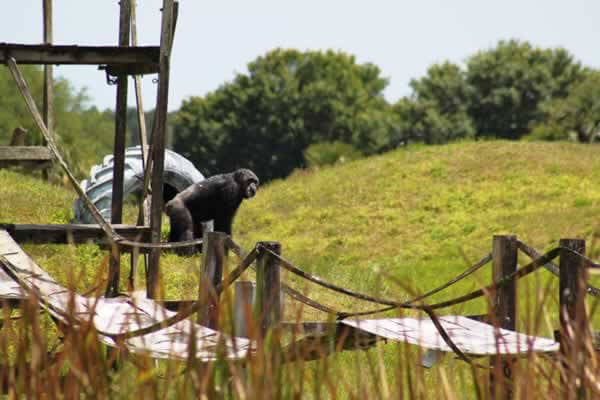A visit to an animal sanctuary can be a truly unforgettable experience. These sanctuaries provide a safe haven for animals who have been rescued from neglect, abuse, or exploitation, allowing them to live out their lives in a natural and protected environment. However, it’s important to remember that these are not zoos or amusement parks – they are places of refuge and rehabilitation for the animals. As such, visitors must approach these visits with respect and responsibility towards both the animals and the sanctuary staff. In this guide, we will offer comprehensive tips to enhance your experience while ensuring that you act responsibly and compassionately towards the wildlife.
Before Your Visit

- Research and Choose the Right Sanctuary
The first step to having a successful and fulfilling animal sanctuary visit is to research and choose the right sanctuary for you. There are many different types of sanctuaries, each with their own mission and focus. Some may specialize in certain species, such as big cats or primates, while others may have a broader range of animals. Consider what type of animals you would like to see and which sanctuary aligns with your interests. It’s also important to consider the location of the sanctuary, as some may require a long journey to reach.
Reading reviews from previous visitors can also provide valuable insights and help you make an informed decision. Look for reviews that mention the overall experience, the treatment of the animals, and the knowledge of the staff. Additionally, look for any potential red flags, such as reports of mistreatment or unsafe practices.
- Book Guided Tours if Possible
Many sanctuaries offer guided tours led by experienced staff members. These tours can provide valuable information and insights about the animals, their behaviors, and the sanctuary’s mission and goals. They can also help visitors navigate the sanctuary safely and efficiently.
If guided tours are available, it’s recommended to book one in advance. This will help the sanctuary manage visitor numbers and ensure that you have a spot on the tour. It’s important to adhere to the designated tour schedules to avoid disrupting the animals’ routines and maintain the safety of both visitors and animals.
- Check Sanctuary Regulations
Before your visit, it’s essential to familiarize yourself with the sanctuary’s rules and regulations. These may include guidelines for permitted activities, appropriate clothing, and animal interactions. Some sanctuaries may have specific restrictions on certain behaviors, such as taking photos or using flash photography.
It’s crucial to obey all posted signs and follow any instructions given by the staff. These regulations are in place to protect both the animals and visitors, and failure to comply could result in serious consequences.
- Pack Appropriately
When visiting an animal sanctuary, it’s important to dress appropriately for the environment and activities. Wear comfortable clothing and sturdy, closed-toe shoes suitable for walking on uneven terrain. If the sanctuary is in a humid or buggy area, consider wearing long pants and sleeves and bringing insect repellent.
It’s also a good idea to bring a few essential items, such as binoculars, a camera (without flash), and a water bottle. However, it’s best to leave any food or drinks at home, as these can attract wildlife and potentially cause harm to the animals.
During Your Visit

- Respect Boundaries
One of the most critical aspects of visiting an animal sanctuary is respecting boundaries. These animals are not domesticated pets; they are wild animals who have been rescued from dangerous or unhealthy situations. As such, it’s crucial to maintain a safe distance from them and follow designated viewing areas.
Avoid attempting to touch or feed the animals unless specifically permitted by the staff. Even if an animal appears friendly or docile, it’s important to remember that they are still wild animals with natural instincts and behaviors. Touching or feeding them can be dangerous for both you and the animal.
- Follow Staff Instructions
The sanctuary staff are highly knowledgeable and trained in the care of the animals. They know the animals’ behaviors, personalities, and boundaries better than anyone else. As such, it’s essential to follow any instructions given by the staff, whether it’s related to your safety or the well-being of the animals.
If a staff member asks you to move away from an area or stop a certain activity, it’s important to comply without argument or hesitation. Ignoring their instructions could put yourself and the animals at risk.
- Be Mindful of Noise and Movement
Wild animals are naturally skittish and easily startled. As such, it’s crucial to be mindful of your noise level and movement when visiting an animal sanctuary. Loud noises, sudden movements, or excessive talking can cause stress and anxiety for the animals, which can be harmful to their well-being.
Be considerate of others in your group and try to keep noise levels to a minimum. Additionally, avoid running, jumping, or making sudden movements that could startle the animals.
- Respect the Animals’ Privacy
Just as we value our privacy, animals also need their space and privacy. While visiting a sanctuary, it’s essential to respect the animals’ privacy and not intrude on their personal space. Avoid getting too close to the animals or trying to get their attention, as this can cause them stress and disrupt their daily routines.
It’s also important to refrain from taking photos or videos if an animal appears to be distressed or uncomfortable. The staff may have more information about the animal’s behavior and can advise you on whether it’s appropriate to take photos.
- Do Not Remove Anything from the Sanctuary
It may be tempting to take home a souvenir from your visit, such as a feather or a rock, but it’s important to remember that these items belong in the sanctuary. Removing anything from the sanctuary can disrupt the ecosystem and potentially harm the animals.
Additionally, some sanctuaries have strict policies against removing any natural materials or artifacts from the premises. Respect these guidelines and leave everything as you found it.
After Your Visit

- Share Your Experience Responsibly
After your visit to an animal sanctuary, it’s natural to want to share your experience with others. However, when sharing photos or videos on social media or other platforms, it’s important to be mindful of the content you are posting.
Avoid sharing anything that could be seen as intrusive or disrespectful towards the animals or the sanctuary staff. Additionally, refrain from geo-tagging the location, as this can attract unwanted attention to the sanctuary and potentially put the animals at risk.
- Consider Donating or Volunteering
Many animal sanctuaries rely heavily on donations and volunteers to continue their important work. If you had a positive experience during your visit, consider giving back by donating to the sanctuary or volunteering your time.
Sanctuaries often have volunteer programs where individuals can assist with daily tasks, such as cleaning enclosures, preparing food, and providing enrichment for the animals. This can be a rewarding way to contribute to the sanctuary’s mission and make a difference in the lives of the animals.
- Educate Others About Animal Welfare
Visiting an animal sanctuary is not only an opportunity for a fun and educational experience, but it’s also a chance to learn about animal welfare and conservation. Use your visit as a platform to educate others about the importance of protecting and respecting wildlife.
Share what you learned during your visit and encourage others to support sanctuaries and organizations working towards animal welfare and conservation efforts.
Conclusion

A visit to an animal sanctuary can be a life-changing experience, allowing us to connect with nature and appreciate the beauty and diversity of wildlife. However, it’s crucial to approach these visits with respect for both the animals and the sanctuary staff. By following the tips outlined in this guide, you can enhance your experience while ensuring that you act responsibly and compassionately towards the wildlife. Remember to research and choose the right sanctuary, adhere to rules and regulations, respect boundaries and privacy, and give back to the sanctuary through donations or volunteering. With these guidelines in mind, you can have a truly unforgettable and meaningful visit to an animal sanctuary.
wfriv.xyz